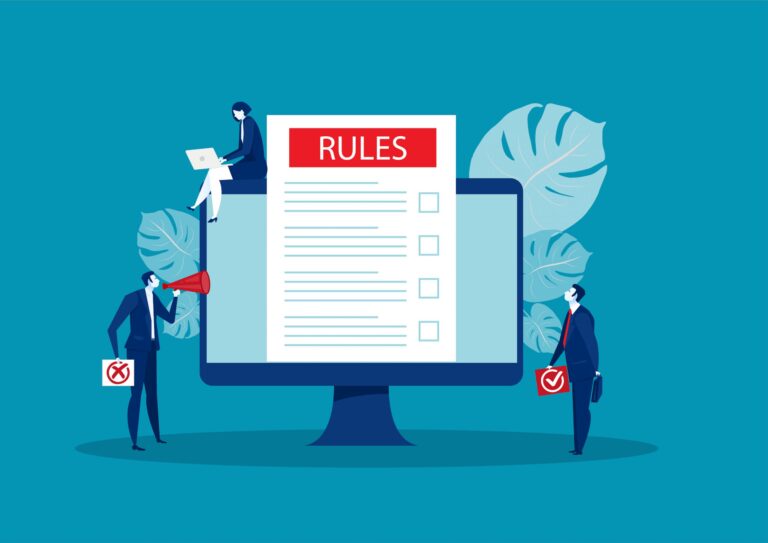
Manager working with Gantt chart schedule table to plan tasks and deliverable. Scheduling activities with milestone planning software. Corporate strategy for sales, marketing, finance, and operations.
The proliferation of misinformation poses significant challenges to businesses striving to maintain their reputations. Notably, the number of countries engaging in organized social media manipulation to disseminate political disinformation has escalated from 28 in 2017 to 81 in 2020.
This surge underscores the critical importance of implementing robust negative news screening processes. By proactively monitoring adverse media, organizations can identify and mitigate potential risks associated with misinformation, thereby safeguarding their integrity and ensuring informed decision-making.
Key Takeaways
- What is Negative News Screening?
- Steps Involved in the Negative News Screening Process
- The Role of Negative News Screening Solutions in Business Protection
- Final Thoughts
What is Negative News Screening?
In today’s fast-paced business world, safeguarding an organization’s reputation is essential. Negative news screening serves as a crucial method for identifying potential risks linked to individuals or entities. This process involves scanning publicly available sources, including news reports, legal documents, and regulatory databases, to detect any associations with financial crimes, corruption, or unethical activities.
Regulatory bodies emphasize the importance of conducting thorough background checks to mitigate risks. Businesses, particularly those in finance, compliance, and legal sectors, must stay vigilant against reputational threats. A well-structured negative news screening approach helps in making informed decisions while ensuring adherence to regulatory requirements. Without a proactive risk assessment strategy, businesses may unknowingly associate with individuals or organizations involved in fraudulent or illicit activities, leading to financial and legal consequences.
Steps Involved in the Negative News Screening Process
Organizations should develop a systematic implementation method for their negative news screening system to comply with regulatory requirements. Organizations should initiate information retrieval by accessing data from combinations of print media, digital news platforms, regulatory watchlists, as well as social networks. Businesses utilize artificial intelligence together with machine learning methods to automate adverse media identification and classification resulting in more precise detections and lower human involvement.
Once data is collected, a thorough evaluation is conducted to assess the severity and relevance of negative news. This step ensures that only credible and significant findings impact business decisions. Since false positives can lead to unnecessary concerns, refining the screening process is essential to maintain precision. Additionally, ongoing monitoring is necessary, as new information can emerge that alters the risk profile of previously assessed individuals or organizations.
Compliance teams play a pivotal role in verifying negative news alerts by cross-referencing information with official regulatory databases. This validation step ensures that businesses rely on accurate and legally recognized data rather than unverified reports. Regularly updating screening parameters and adjusting to evolving regulations further strengthens the effectiveness of the screening process.
The Role of Negative News Screening Solutions in Business Protection
In an environment where financial crimes and reputational risks pose significant challenges, businesses must be proactive in detecting potential threats. Negative news screening solutions provide organizations with an efficient way to monitor adverse media and identify high-risk associations before they become major issues. These solutions use automation and artificial intelligence to enhance due diligence efforts, minimizing the chances of oversight.
Advanced screening systems create one of the highest benefits by reducing human manual work. Businesses currently struggle with two major disadvantages when they depend on traditional manual reviews of media sources. Advanced biometric AML enables businesses to take instant decisions by providing both immediate real-time alerts and analysis capabilities. Avoiding regulatory penalties through anti-money laundering compliance becomes possible because of these features.
Moreover, integrating automated screening tools into existing compliance frameworks enhances operational efficiency. These solutions offer customizable filters, enabling businesses to tailor their screening approach based on industry-specific concerns. By prioritizing high-risk cases, compliance teams can focus on addressing the most critical threats instead of sorting through irrelevant information.
Beyond regulatory compliance, implementing robust negative news screening solutions reinforces trust among stakeholders, investors, and clients. Businesses that prioritize risk mitigation demonstrate their commitment to ethical practices and corporate responsibility. Identifying potential connections to fraud, money laundering, or regulatory violations in advance helps organizations prevent reputational harm and financial liabilities.
Final Thoughts
Business operations now require negative news screening as an essential component that benefits their operations. An organized approach allows companies to successfully reduce their risks across reputation damage and financial loss together with legal compliance issues. Advanced screening technologies bring two advantages to threat detection: they make the processes faster and they produce more precise results. Regulatory changes demand that businesses maintain dynamic procedures to screen their operations. Risk assessment conducted proactively helps organizations establish reliable relationships while preserving transparency throughout their operational processes. Business sustainability together with enduring credibility depends on organizations implementing an effective screening framework because of rapid public perception changes from negative media.







